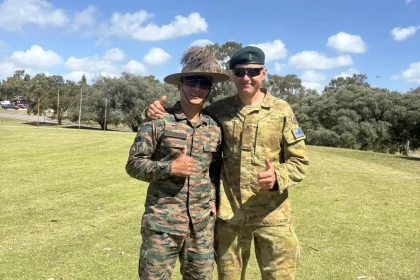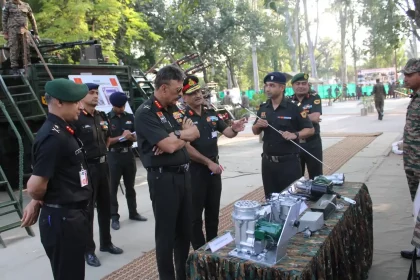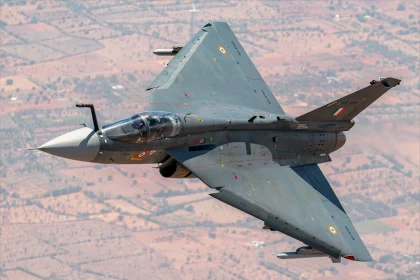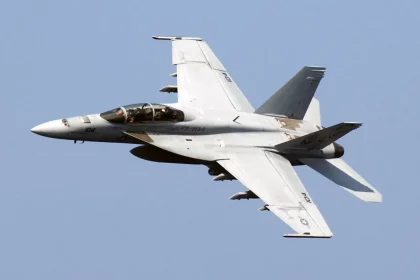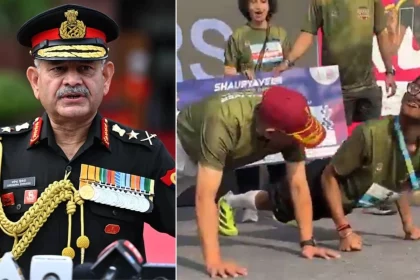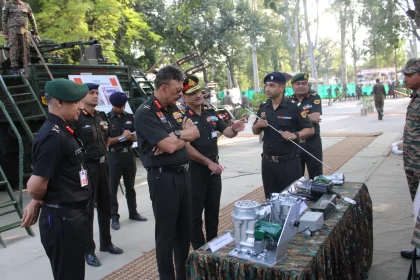Exercise AUSTRAHIND 2025 Concludes in Perth, Strengthening India–Australia Defence Ties
Exercise AUSTRAHIND 2025 concluded in Perth, showcasing enhanced military interoperability and reaffirming the strong India–Australia defence partnership.
Lt Gen Rajiv Kumar Sahni Reviews EME Operational Preparedness at Kharga Corps
Lt Gen Rajiv Kumar Sahni visited Kharga Corps to review EME preparedness and praised indigenous drone innovations promoting self-reliance and…
TEJAS Leads Breakthrough MUM-T Maritime Strike off Konkan Coast
Seamless Tejas–UAV teaming and autonomous control validate India’s rising capability in networked maritime strike and manned-unmanned integration.
US Navy Helicopter and Fighter Jet Crash During Routine Operations in South China Sea; All Crew Members Safe
Both aircraft from USS Nimitz crashed during separate routine operations; no casualties reported as investigation begins amid US-China tensions.
Watch: Army Chief General Upendra Dwivedi Joins Specially-Abled Athlete in Push-Ups During Shauryaveer Run
General Dwivedi’s inspiring gesture with a specially-abled athlete embodies the spirit of unity, inclusivity, and the enduring courage of India’s…
DGEME Lt Gen Rajiv Kumar Sahni Reviews Operational Preparedness and Technological Innovations at Kharga Corps
DGEME applauds Kharga Corps’ indigenous drone innovations and self-reliance efforts in advancing operational technology.

